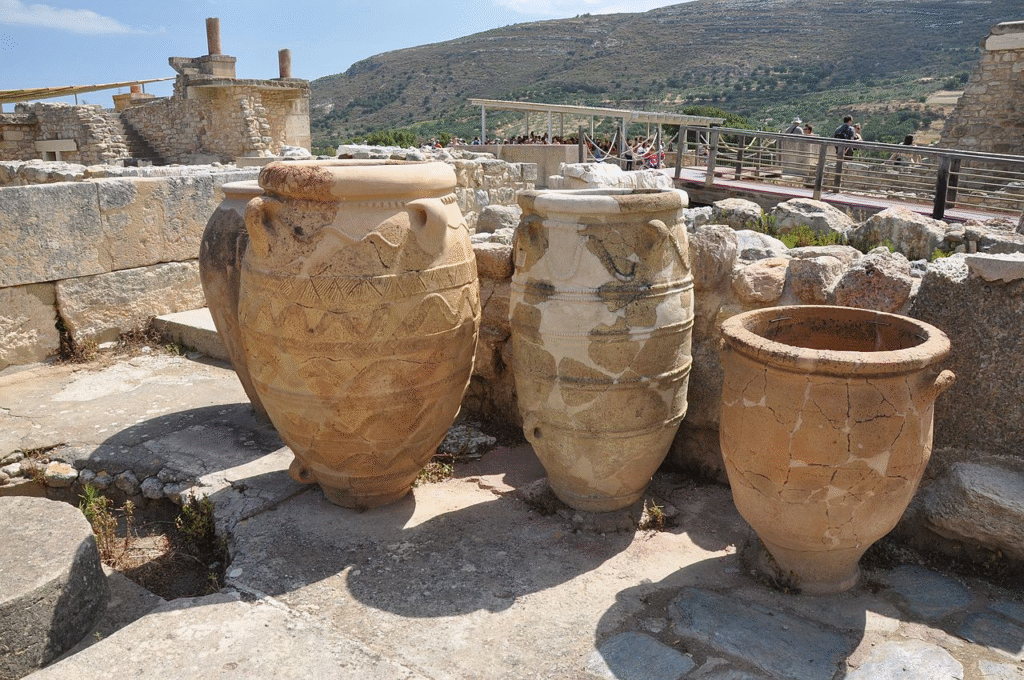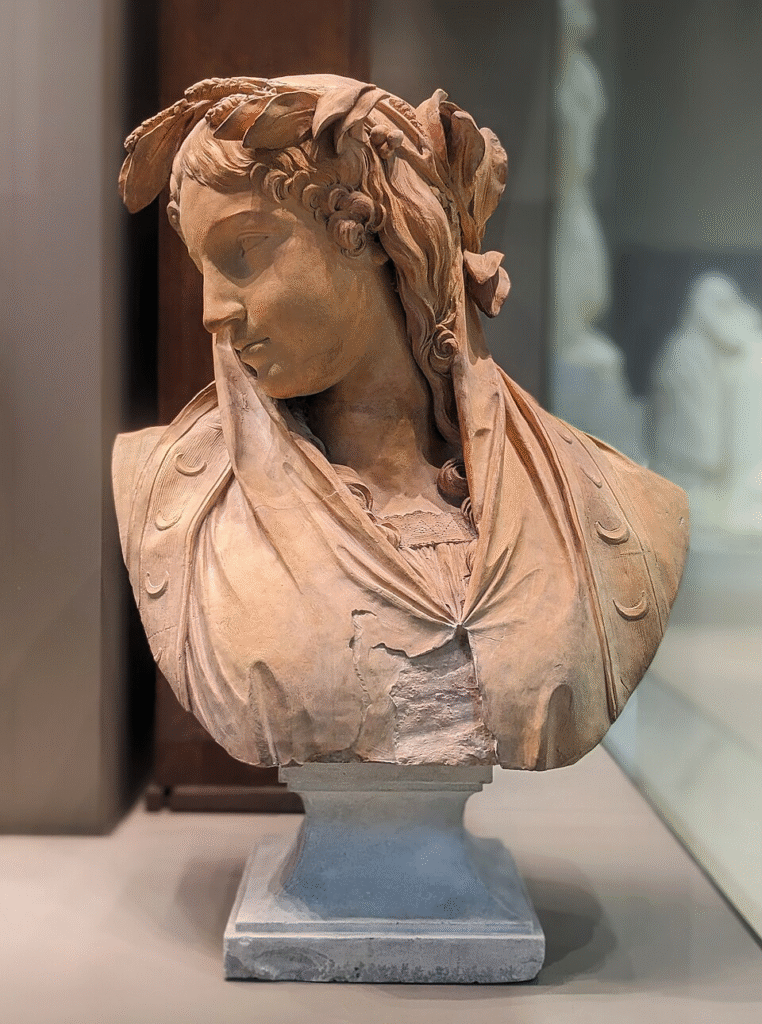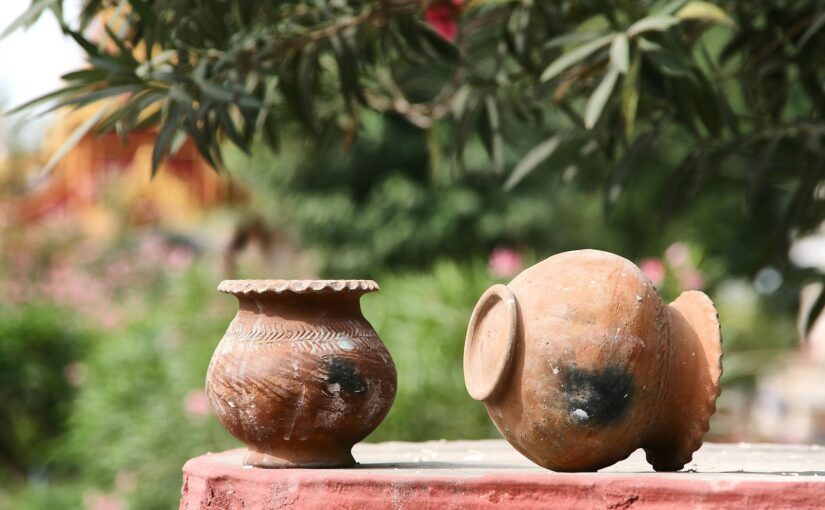In the cradle of ancient civilizations, where the sun hangs heavy and the earth yields its secrets, color emerges not just as pigment but as a living pulse. Terracotta and ochre, those warm, sun-kissed tones drawn from the soil itself, have long whispered the story of the Mediterranean. They coat the walls of hillside villages, tile the roofs of olive groves, and stain the very air with a golden haze. These hues do more than adorn; they embody the soul of a region where architecture mirrors the rhythms of light, land, and longing. To walk through a Tuscan borgo or a Greek island hamlet is to feel the emotional geometry of these colors: curves of baked clay that hug the contours of the earth, evoking a sense of rootedness amid the vast blue of the sea. This essay traces how terracotta and ochre evolved from humble materials into profound symbols of home, heritage, and the eternal glow of sunlight.
From Clay to Culture
Long before architects sketched blueprints, the Mediterranean peoples turned to the ground beneath their feet. Clay, abundant and malleable, fired in the relentless sun or simple kilns, birthed terracotta. Its name derives from the Italian “terra cotta,” meaning “baked earth,” a nod to its origins in the fertile soils of river valleys and coastal plains. Ochre, that softer spectrum of yellows and reds, came from iron-rich deposits, ground into powders and mixed with lime to paint walls that withstood the elements.

In ancient times, these colors carried practical weight. The Mediterranean climate, with its scorching summers and mild winters, demanded materials that breathed. Terracotta tiles absorbed the day’s heat and released it slowly at night, cooling interiors without the chill of stone. Yet practicality gave way to poetry as these hues seeped into cultural identity. In Greece, the Minoans of Crete adorned their palaces with frescoes in ochre tones, depicting bull-leaping youths against sunlit backdrops, as if the earth itself celebrated vitality. These colors were not mere decoration; they invoked the gods of harvest and hearth, linking human dwellings to the divine landscape.
Across the sea in North Africa, Berber communities in Morocco and Algeria interpreted terracotta through the lens of nomadic endurance. Here, ochre walls of kasbahs rose like sentinels in the desert, their dusty reds blending with the Sahara’s sands. The color symbolized resilience, a visual anchor for those who wandered but always returned to the idea of home. In this way, terracotta transcended utility, becoming a cultural thread woven into myths and rituals, where the warmth of clay evoked the mother’s embrace or the sun’s benevolent gaze.

The Warmth of Sun-Baked Walls
Imagine the play of light on a Provençal farmhouse at dawn. The ochre facade catches the first rays, glowing like embers in a fading fire, while terracotta shutters frame windows that overlook lavender fields. In southern France, these colors owe their endurance to the mistral winds and the dry heat that bakes the earth into a palette of russets and ambers. Provence’s builders slaked lime with ochre from local quarries, creating washes that aged gracefully, patinas deepening like memories etched in stone.
This sensory embrace of sunlight shaped the spiritual perception of home. In the Mediterranean, shelter was never just walls; it was a sanctuary against the glare and the gale, a vessel for family stories told under olive branches. Terracotta’s texture, rough and fingerprint-marked from hand-molding, invited touch, grounding inhabitants in the tactile world. The colors amplified this intimacy. Their warm undertones mimicked the skin of the land, fostering a sense of belonging that soothed the soul amid seasonal fluxes.
Travel to Spain’s Andalusia, and the interpretation shifts to fiery passion. Whitewashed pueblos like Ronda perch on cliffs, but their terracotta accents in doorways and patios pulse with the intensity of flamenco rhythms. Here, ochre draws from the Sierra Nevada’s mineral veins, mixed into plasters that reflect the region’s Moorish legacy. Islamic artisans, fleeing or arriving across centuries, infused these hues with geometric precision, where interlocking tiles in terracotta reds symbolized the infinite patterns of fate and faith. Climate played its role too: the Iberian sun, fiercer than in the north, demanded colors that absorbed rather than repelled light, turning homes into cool refuges that still radiated warmth. For the people, this created an emotional geometry, where walls curved like a lover’s form, enclosing courtyards that blurred indoors and out, home and horizon.
Echoes in Stone and Sea
Greece offers a crisper take on terracotta’s legacy, where the island Cyclades gleam white against azure waters, yet ochre accents ground the scene in earthly reality. On Santorini, blue-domed churches rise from volcanic cliffs, but their terracotta bases and pathways recall the island’s pumice soils, fired by eruptions into resilient forms. Ancient Greeks revered these colors in their temples; the Parthenon’s marbles, once painted in vivid ochres, stood as tributes to Athena, goddess of wisdom and the hearth.
The spiritual dimension deepened here. Home, or “oikos,” was sacred, a microcosm of the cosmos. Terracotta urns and roof tiles, ubiquitous in Homeric epics, carried the dead to the afterlife while cradling the living in daily life. The hues evoked sunlight’s life-giving force, a counterpoint to the sea’s cool depths. Materials mattered profoundly: clay from Attic hills, rich in iron, yielded ochres that resisted the salty winds, ensuring homes endured like the myths they housed.

In Italy, the heart of terracotta’s romance beats strongest. Tuscany’s cypress-lined roads lead to villas where ochre walls embrace vineyards, their tones harvested from the Chianti earth’s clay beds. Renaissance masters like Brunelleschi drew inspiration from Etruscan roots, where terracotta plaques adorned tombs with scenes of feasting and farewell. The climate, with its long, golden hours, inspired builders to let sunlight dance on these surfaces, creating shadows that told time and tale. For Italians, these colors symbolized heritage, a visual lineage from Roman aqueducts to medieval hill towns, where every faded wall whispered of ancestors who tilled the same soil.
North Africa’s interpretation adds layers of spice and shadow. In Tunisia’s medinas, like Sidi Bou Said, terracotta mingles with turquoise doors, but ochre dominates the labyrinthine alleys, drawn from the Atlas Mountains’ red sands. Berber and Arab influences blend here, with colors signifying protection against the evil eye. The harsh sun and sirocco winds necessitated thick, earthen walls that cooled by evaporation, their hues a camouflage in the dusty expanse. Spiritually, home became a fortress of memory, where terracotta’s warmth combated isolation, drawing families into riads centered on courtyards alive with fountains and figs.

A Palette of Belonging
What unites these regional tapestries is the interplay of climate, materials, and the innate human yearning for rootedness. The Mediterranean’s sun, a constant companion, bleached stones pale but enriched clays with fiery depth, compelling builders to harness these tones for harmony. Materials like straw-tempered clay or lime-ochre plasters were local, sustainable, born of the land’s generosity. Spiritually, terracotta hues embodied “home” as more than structure; it was a vessel for heritage, where colors like a family’s heirloom quilt wrapped generations in shared warmth.
In Provence, the gentle ochres spoke of pastoral idylls, evoking lazy afternoons in the Luberon. Spain’s bolder reds pulsed with fiesta energy, Greece’s subtler tones with philosophical calm, Italy’s with operatic drama, and North Africa’s with resilient mystery. Each variation reflected how people perceived their place in the world: terracotta as the earth’s gift, ochre as sunlight captured, both forging an emotional geometry that bent space toward comfort and continuity.
Reflections on Enduring Light
Today, as I trace the curve of a terracotta rooftop from my own window overlooking a distant shore, I feel the pull of these colors across time. They remind me that design is not about trend but timelessness, a way to bottle sunlight and soil into symbols of belonging. In our fast world of glass and steel, terracotta and ochre call us back to memory’s hearth, where home is the warmth of heritage etched in every hue. They teach that true architecture cradles the spirit, turning mere walls into whispers of the sun-soaked soul. Why do they endure? Because in their glow, we find not just beauty, but the quiet assurance that we, too, are part of the earth’s enduring palette.

Header image by Daniel Kirsch.
